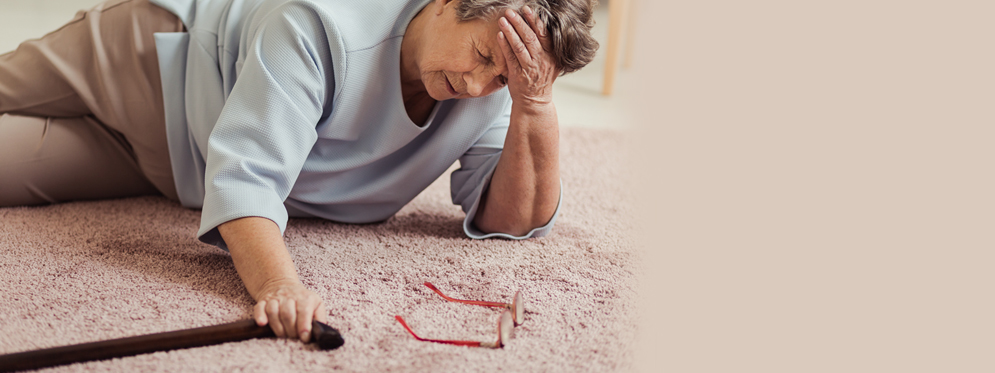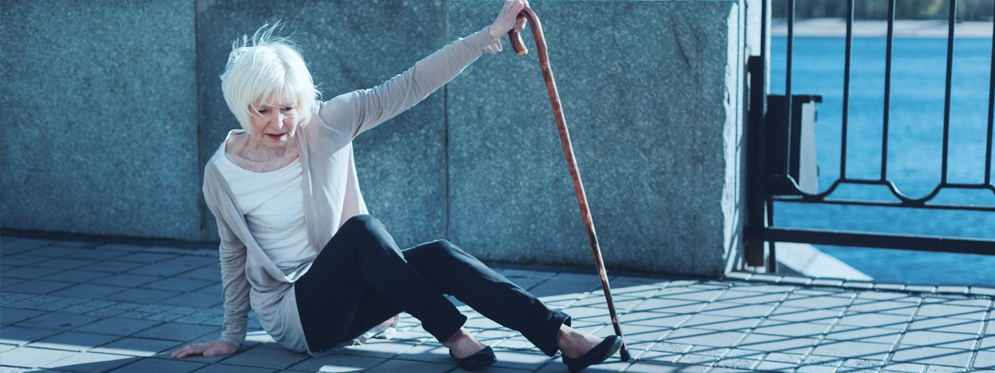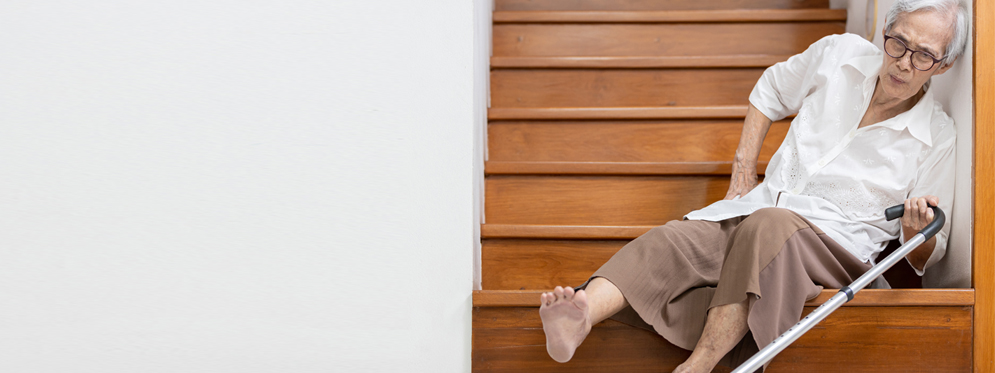Falls And Falls Prevention
Are you experiencing any of the following symptoms?
|
|
DID YOU KNOW?
One in three people over the age of 65 fall each year, increasing to one in two people over the age of 80.
Falls can have serious consequences for older people and their families. They can impact a person’s quality of life, cause serious injury, fractures, disability, and lead to reduced physical activity and socialisation. Furthermore, falls have been noted to increase the need for residential care and even mortality rates.
Preventing falls requires a comprehensive strategy that incorporates various methods to address the different factors that contribute to falls. This is known as a multi-modal approach. Understanding and implementing this approach can greatly enhance safety and quality of life. At Malvern Chiropractic Clinic and Melbourne Spine Clinic we are primed to be at the forefront of assisting our patients and the older populations in the community.
Key Components for Falls Prevention:
- Exercise and Physical Therapy: Regular physical activity is crucial for maintaining strength, balance, and coordination. Exercise programs, such as balance training, strength exercises, and gait training, help improve muscle strength and flexibility. At Malvern Chiropractic Clinic and Melbourne Spine Clinic we offer small, beginner friendly classes aimed at Falls Prevention with a focus on these specific target areas.
- Spinal Health Management: Our spines are responsible for the messages that control our balance and posture. Strong and flexible spinal muscles and joints help support the body and maintain proper balance. Some chronic spinal pain conditions such as, spinal stenosis, degenerative disc disease and nerve compression can affect a person’s balance and awareness in the periphery (feet). Other symptoms such as numbness in the feet can also increase the risk of falls.
- Home Safety Modifications: Many falls occur at home due to environmental hazards. Simple modifications can significantly reduce the risk. These include installing grab bars in the bathroom, ensuring adequate lighting throughout the home, removing tripping hazards like loose rugs, and securing electrical cords. Conducting a home safety assessment with a professional can identify potential risks and recommend necessary changes.
- Medication Management: Certain medications can increase the risk of falls, particularly those that affect balance or cause dizziness. It is important to review medications regularly with your General Practitioners to identify any that may contribute to increasing the risk of a fall. Adjusting doses or switching medications may be necessary to minimise these risks, and should be discussed with your GP or pharmacist
- Vision and Hearing Checks: Impaired vision and hearing can significantly contribute to falls. Regular eye exams and hearing tests are essential for maintaining sensory health. Corrective lenses and hearing aids can improve spatial awareness and help prevent falls. Ensuring that prescription glasses are up to date can also reduce the risk of falling.
- Education and Awareness: Educating our patients and caregivers about fall risks and prevention strategies is a crucial part of a multi-modal approach. Understanding the common causes of falls and how to address them empowers individuals to take proactive steps. This includes learning how to fall safely and what actions to take if a fall does occur.
- Nutrition and Hydration: As our patients get older it is imperative that they also maintain good nutritional and metabolic health. This includes healthy and balanced diets.
How do Chiropractors help?
Malvern Chiropractic Clinic and Melbourne Spine Clinic have a special interest in Falls Prevention and want to do everything we can to help patients to live well into their later years.
The Cox® Certified Chiropractors at Malvern Chiropractic Clinic, and Melbourne Spine Clinic are highly qualified to assess and treat spinal dysfunctions using Cox® Flexion-Distraction and Spinal Decompression Therapy. Our Chiropractors are proficient in identifying risks and assessing frailty to recommend a program of exercises and a treatment plan for the prevention of falls.
Using Cox® Flexion-Distraction Therapy to treat conditions such as low back pain and spinal stenosis can help restore pain-free, normal function to the spinal joints, discs, and surrounding musculature. This can help improve balance problems, decrease numbness in the lower limbs and improve physical activity, ensuring you can complete your regular activities of daily living (ADLs).
Cox® Technic is a safe, gentle, low-force and non-invasive Chiropractic treatment with over 40 years of top-notch research in peer-reviewed journals, publications, and textbooks worldwide.
Falls Prevention Program
Malvern Chiropractic Clinic and Melbourne Spine Clinic have developed a program to help assess patients and if necessary, intervene with evidenced based strategies.
The Falls Prevention Program assessment is conducted by one of our Chiropractors and takes about 30 minutes to complete.
The Program covers 3 key areas:
1.Screening:
This involves a simple and short questionnaire for patients to fill out. It should take anywhere from 2-5 mins to complete and begins with simple YES/ NO responses. This initial step ensures that those at potential risk are promptly identified.
2. Assessment:
Patients will then undergo a series of simple tests in clinic with our Chiropractors. These tests will assess all the key components of a multi-modal Falls Prevention Program. Additionally, the program reviews environmental factors that may influence fall risk, such as home safety. The goal is to pinpoint individual vulnerabilities and develop a tailored strategy to address them.
3. Management:
Based on the screening and assessment results, a personalised management plan is crafted for each patient. This plan integrates various interventions designed to mitigate fall risk. Key components of the management phase include:
- Exercise Programs: Exercise regimens to enhance balance, strength, and coordination, crucial for fall prevention.
- Education and Training: Guidance on fall prevention strategies, including safe movement techniques and the use of assistive devices if necessary.
- Home Safety Modifications: Recommendations for adjustments in the home environment to reduce hazards and improve safety.
- Annual Follow-ups: Ongoing yearly evaluations to monitor progress, adjust the management plan as needed, and provide continuous support.
Preventing falls requires more than just one solution. By integrating exercise, home safety modifications, medication management, sensory checks, education, and spinal health and wellbeing, a multi-modal approach offers a holistic and effective strategy for reducing fall risks. Adopting this comprehensive approach can lead to greater safety, independence, and overall well-being.
If you or a loved one feel you might be at risk of a fall, and would like to discuss a multi-modal falls prevention plan, talk our Chiropractors, and get assessed today!
REFERENCES:
- https://www.aihw.gov.au/reports/older-people/older-australia-at-a-glance/contents/summary
- https://www.aihw.gov.au/reports/injury/falls
- Ruhe, A., Fejer, R., Walker, B., Is there a relationship between pain intensity and postural sway in patients with non-specific low back pain? BMC Musculoskelet Discor 12, 162 (2011). http://doi.org/10.1186/1471-2474-12-162
- Ruhe, A., Fejer, R., Walker, B. Pain relief is associated with decreasing postural sway in patients with non-specific low back pain. BMC Musculoskelet Discor. 2012 Mar 21;13:39. doi: 10.1186/1471- 2474-13-39. PMID: 22436337; PMCID:PMC3341188
- Ge, L., Wang, C., Zhou, H., et al. Effects of low back pain on balance performance in elderly people: a systematic review and meta-analysis. Eur Rev Aging Phys Act 18, 8(2021). http://doi.org/10.1186/s11556-021-00263-z
- Falls Prevention and Management: A Best Practice Guide for Allied Health Professionals. NSW Gov. South Eastern Sydney Local Health District (SESLHD). May 2022.
- Preventing Falls and Harm From Falls in Older People – Best Practice Guidelines for Australian Community Care. Australian Commission on Safety and Quality in Healthcare. 2009.
- Seppala, L.J., van de Glind, E.M.M., et al. Fall-Risk-Increasing Drugs: A Systematic Review and Meta-analysis: III. Others. J Am Med Dir Assoc. 2018 Apr;19(4):372.e1-372.e8. doi: 10.1016/j.jamda.2017.12.099. Epub 2018 Mar 2.
- https://medlineplus.gov/lab-tests/fall-risk-assessment/






